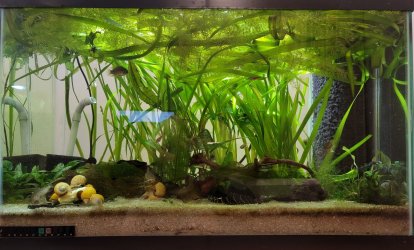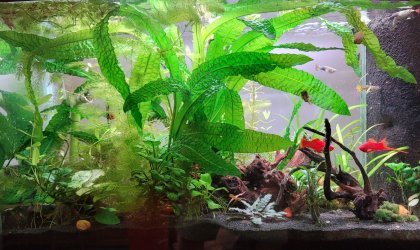Plants require 17 nutrients to grow (assuming the light is of sufficient intensity for the plant species, and the correct spectrum). Macros are oxygen, phosphorus, potassium, sulphur, calcium, hydrogen, carbon, magnesium and nitrogen. Micros are boron, iron, chloride, nickel, copper, manganese, zinc and molybdnum. If some of these, especially some of the micronutrients, are in excess, plants can shut down assimilation of certain other nutrients, creating an insufficiency. This is why the nutrients need some form of being in proportion, which is why not all fertilizers are advisable. And why dosing any single nutrient can be more harm than good.
Phosphorus will be more than sufficient from fish foods, assuming a normally-stocked aquarium using a natural or low-tech method (high tech is another story, outside most of us here). Nitrogen must be in the form of ammonia/ammonium, not nitrate, for the vast majority of aquatic plants. This is why fast growing plants such as surface plants are often called "ammonia sinks;" the amount of ammonia/ammonium they can take up is rather amazing. But they do nottake up nitrate unless ammonium, then nitrite, are insufficient to balance. For most of us with natural systems the fish plus the decomposition of organics in the substrate will provide all the ammonium to balance. And the latter is the primary source of carbon as CO2. Some plants are able to use bicarbonates (example, Vallisneria species which are native to the rift lakes), some (example mosses I believe) are not. Some will turn to bicarbonates if CO2 is inadequate.
Some nutrients are taken up exclusively from the water, via the leaves. Others via the roots.
Edit. In re-reading, I see I missed something I especially wanted to point out. Nitrate is harmful to fish. The species, the level and the exposure time can all factor in with respect to its effects. It is perhaps best to consider it as a weakening agent to fish, which allows other problems to have more of a detrimental effect on the fish than would otherwise (without nitrates) be easily handled. This is why nitrate should not be added as a plant nutrient.
Phosphorus will be more than sufficient from fish foods, assuming a normally-stocked aquarium using a natural or low-tech method (high tech is another story, outside most of us here). Nitrogen must be in the form of ammonia/ammonium, not nitrate, for the vast majority of aquatic plants. This is why fast growing plants such as surface plants are often called "ammonia sinks;" the amount of ammonia/ammonium they can take up is rather amazing. But they do nottake up nitrate unless ammonium, then nitrite, are insufficient to balance. For most of us with natural systems the fish plus the decomposition of organics in the substrate will provide all the ammonium to balance. And the latter is the primary source of carbon as CO2. Some plants are able to use bicarbonates (example, Vallisneria species which are native to the rift lakes), some (example mosses I believe) are not. Some will turn to bicarbonates if CO2 is inadequate.
Some nutrients are taken up exclusively from the water, via the leaves. Others via the roots.
Edit. In re-reading, I see I missed something I especially wanted to point out. Nitrate is harmful to fish. The species, the level and the exposure time can all factor in with respect to its effects. It is perhaps best to consider it as a weakening agent to fish, which allows other problems to have more of a detrimental effect on the fish than would otherwise (without nitrates) be easily handled. This is why nitrate should not be added as a plant nutrient.
Last edited:



